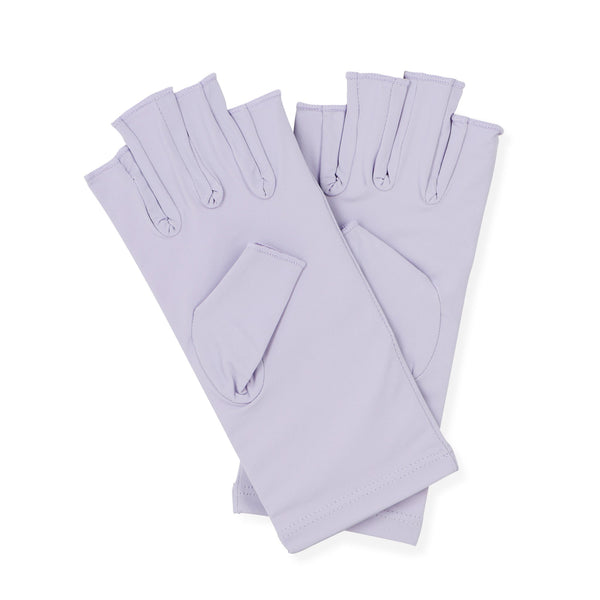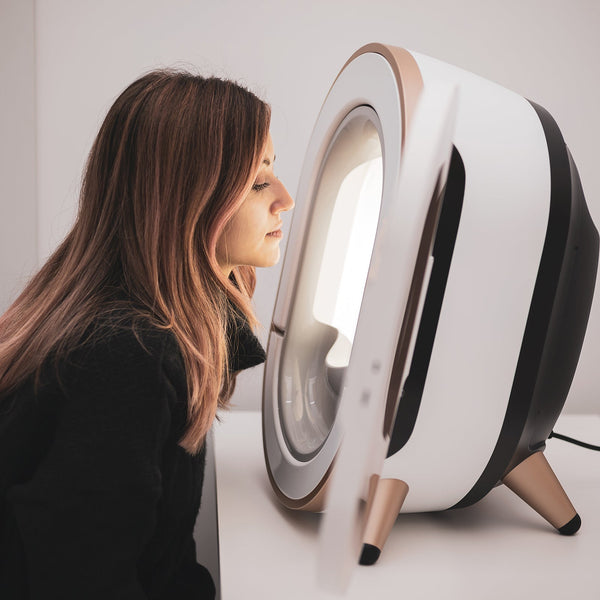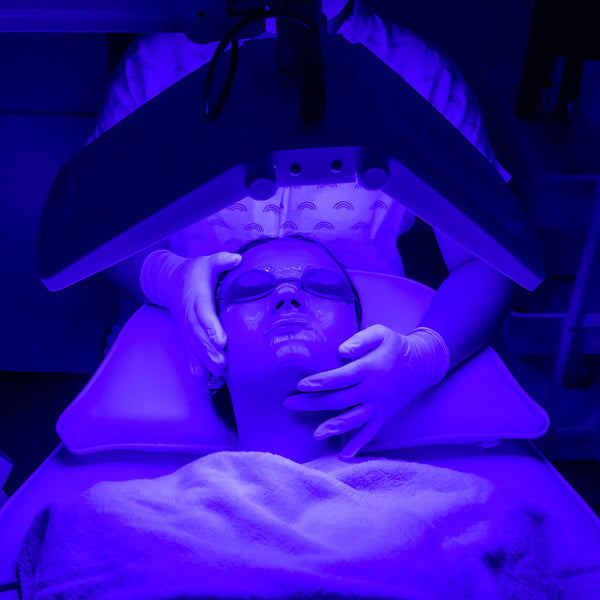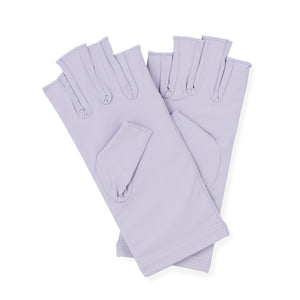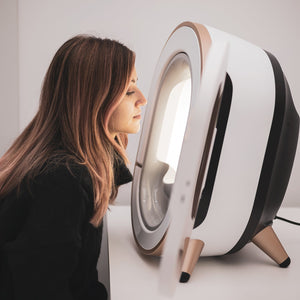Why Blue Light is Bad for Hyperpigmentation: What Every Esthetician Should Know

As licensed estheticians, understanding how different wavelengths of light affect the skin is essential—especially when working with clients struggling with hyperpigmentation and melasma. While LED light therapy is a staple in many treatment rooms, not all light is beneficial for every skin concern. In fact, blue light (within the visible spectrum) may be doing more harm than good when it comes to pigment disorders.
The Science of Light and Skin
Light is measured in nanometers (nm), and the visible light spectrum spans from approximately 400–700 nm. Just beyond the visible range are ultraviolet rays—UVA (315–400 nm) and UVB (280–315 nm)—which are well-known culprits behind pigmentation, sun damage, and skin aging.
Blue light, used in many esthetic LED devices, typically falls between 400–500 nm, placing it right next to UVA. Because of this proximity, blue light carries similar risks when it comes to triggering melanin production and worsening hyperpigmentation. Multiple studies have shown that blue light exposure can increase melanin synthesis, especially in skin types III and higher. The result? Long-lasting and often stubborn pigmentation—particularly for those with melasma.
Blue Light from Skincare LED Devices: A Real Concern
It’s important to distinguish between blue light emitted from screens and the high-intensity blue light used in LED skincare devices. In the treatment room or during at-home facials, blue LED panels or masks are often marketed for acne because of their antibacterial effects against C. acnes. However, these same blue wavelengths can exacerbate melasma and post-inflammatory hyperpigmentation (PIH) in sensitive clients.
Estheticians should avoid using blue LED devices on clients with:
-
Active melasma
-
PIH from acne or inflammation
-
Fitzpatrick skin types III–VI
Even brief sessions of blue light therapy can result in pigmentation that persists for days or even weeks. The effects are cumulative and dose-dependent, meaning repeated use increases the likelihood of hyperpigmentation.
Green and Purple Light: More Hype Than Help
Green and purple (violet) light often appear in multicolor LED masks and handheld devices. Marketing claims suggest green light can "brighten" or "reduce discoloration," but there is currently little to no clinical evidence supporting its efficacy for hyperpigmentation or melasma in esthetic practice.
Purple light is typically a combination of red and blue wavelengths, aimed at both acne and inflammation. However, the inclusion of blue light still poses a risk for pigment-prone clients. These lights are often too shallow in penetration to offer meaningful benefits and should be considered ineffective for treating hyperpigmentation.
Red, Amber, and Infrared: Safe and Supportive
In contrast, red (620–750 nm), amber/yellow (590–620 nm), and near-infrared (700–1200 nm) light have been shown to be non-pigmenting and safe for use on all skin tones, including those prone to melasma.
These wavelengths offer the following benefits:
-
Red light: Stimulates collagen, reduces inflammation, and improves wound healing without triggering melanogenesis.
-
Amber/yellow light: Calms sensitive skin, reduces redness, and supports post-treatment recovery.
-
Infrared light: Penetrates deeper layers of skin and muscle, promoting circulation and tissue repair.
For clients with melasma or pigment instability, these wavelengths are ideal for:
-
Supporting barrier repair after chemical peels or microneedling
-
Reducing inflammation that could lead to rebound pigmentation
-
Enhancing skin rejuvenation without risk of darkening
What Estheticians Should Do
-
Evaluate the device: Always verify the nanometer range of any LED device used in your treatment room or retail offerings. Avoid devices emitting blue light for clients with pigment issues.
-
Customize the protocol: Choose only red, amber, or infrared light for clients with melasma or PIH. Incorporate calming masks and barrier-repair serums in post-LED routines.
-
Educate clients: Many clients now use at-home LED masks or wands. Advise them to avoid devices with blue or multicolor settings unless prescribed for active acne—and only for short durations under your guidance.
-
Protect year-round: Even though this blog focuses on skincare devices and not ambient blue light from screens, it's still wise to advise broad-spectrum SPF with iron oxides for added protection.
While LED therapy can be a powerful tool in the esthetic treatment room, not all wavelengths are safe for every client concern. Blue light, though effective for acne, can worsen melasma and pigmentation. Green and purple lights offer little clinical benefit for pigment correction or any other skin condition. Stick with red, amber, and infrared for skin rejuvenation, healing, and safe pigmentation management.
Understanding the science of light and the individual needs of each client will elevate your protocols and ensure the best outcomes—especially for those navigating the complex world of hyperpigmentation.


